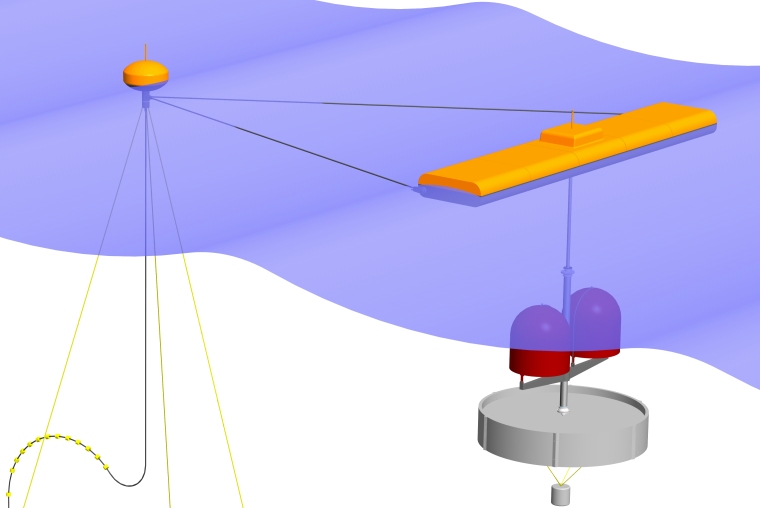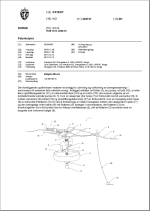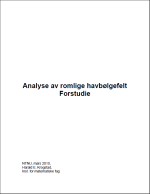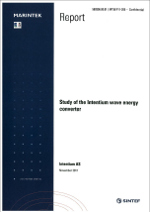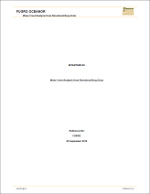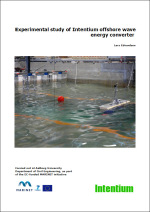Our concepts: iowec & iswec
iowec - Intentium offshore wave energy converter: This project was formally started in 2007 by Intentium as. It is focused on offshore and long-crested wave conditions, in high-energy seas. The concept is characterized by a long float moored to a front buoy and stabilized with its longest side normal to the incoming and dominant wave front. The float is connected to a double-acting water pump, with a buoyancy controlled water anchor attached at the lower end. The PTO has analogy with hydro power, and uses a water turbine connected to a generator. The concept is international patent pending through WO2011065841A1. Since start-up it has been conducted internal model tank testing and carried out several external feasibility studies by e.g. FugroOCEANOR and NTNU. Among the studies, are a numerical analysis by Sintef Marintek in 2011, and model testing in 2012 in the deep wave basin at Aalborg University through the EU FP7 project MARINET. The concept is a results of the company’s design guidelines.
The various parts of this concept include:- Wide stabilized main float
- Double-acting cylinder pump
- Water anchor Buoyancy Controller of the water anchor
- Power take-off, PTO (impulse turbine, generator)
- Front buoy with the mooring system and the electrical subsea cable connections
Having difficulties understanding how it works? Have a look at our videos on YouTube: www.youtube.com/user/IntentiumWavePower.
iswec - Intentium short crested wave energy converter: To have an alternative concept with shorter development path, Intentium has recently started a second wave power project for wave conditions less offshore and with more choppy short-crested waves, like in the Skagerrak (the coastal areas outside Vestfold). The working title for this converter is iswec, where the 's' stands for short crested waves. This concept differ from the offshore iowec in that it has multiple shorter floats. However the iswec concept is based on the experience and the same guidelines as for the offshore iowec - still floating and installed far out from the coastline.
A renaissance for the Salter’s Duck
Salter's duck, or by its official name the Edinburgh duck, also known as the nodding duck, is an ingenious wave energy converter invented by Professor Stephen Salter at the University of Edinburgh in 1974. During the rest of the 70’s and in the beginning of the 80’s, Professor Salter and his team further developed this system, and was at this time the leading force in wave energy development. Unfortunately, the early wave energy industry experienced some serious strokes of both technical problems and political impatience. Soon, falling interest and stop of funding lead to halt of this programme. However, in academy and by developers, the interest for the Salter's Duck geometry has survived the fluctuating political trends.
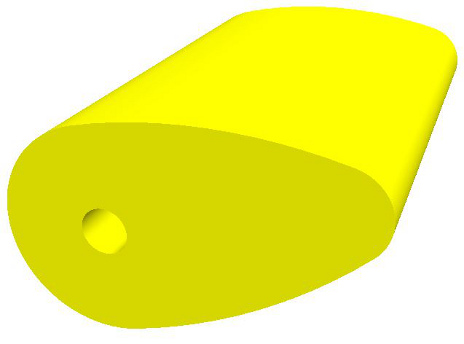
Over the years, this float-geometry has found its way in independent good, but also less good, attempts in various wave energy projects. As with all wave energy concepts; If adopting the Salter’s Duck, it is vital to find a robust solution for the PTO and moorings.
For iswec we will focus on the Salter’s Duck.



